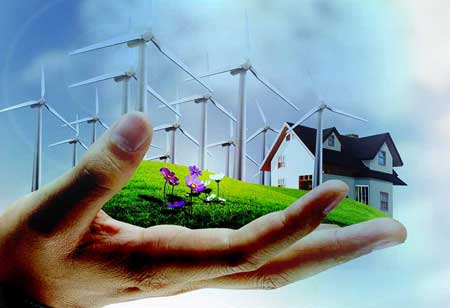Thank you for Subscribing to Energy Business Review Weekly Brief
Solar Energy as a Sustainable Development Tool
Solar energy is a renewable resource that plays a significant part in lowering greenhouse gas emissions and preventing climate change, which is essential for safeguarding people, animals, and ecosystems.

By
Energy Business Review | Wednesday, April 26, 2023
Stay ahead of the industry with exclusive feature stories on the top companies, expert insights and the latest news delivered straight to your inbox. Subscribe today.
Solar power can be a game-changer for the world’s poorest and most environmentally vulnerable people, but it needs to become more affordable.
FREMONT, CA: Solar energy is a renewable resource that plays a significant part in lowering greenhouse gas emissions and preventing climate change, which is essential for safeguarding people, animals, and ecosystems. Additionally, the usage of solar energy can minimize water consumption and enhance air quality.
The use of land is necessary for ground-mounted photovoltaic (PV) and concentrating solar-thermal power installations, thus it is important to choose, plan, and maintain sites in a way that has the least adverse effects on the local species, their habitat, soil, and water resources.
Solar project developers often assess several sites, site designs, and operation plans when sitting and obtaining permits for solar projects. By abiding by the pertinent federal, state, and local regulations; requesting feedback from regulators; conducting impact assessments and mitigation; and so on, they evaluate the environmental effects of their initiatives.
To optimise the siting and permitting process and guarantee healthy surrounding ecosystems, it is in the interest of solar developers, regulators, host communities, and other stakeholders to identify techniques and technologies that accomplish these goals. Stakeholders can enhance decision-making, lower soft costs, or non-hardware costs, and aid businesses in achieving their objectives by expanding the number of resources and field-tested solutions that are available.
Collaborative groups of stakeholders, such as those from the solar business, communities that host solar, state and local governments, universities, environmental and conservation non-profits, and the agriculture sector, may lead research initiatives. Through its technical assistance initiatives, many solar alliances also promote information exchange among interested parties on the most recent tools and techniques that enable solar professionals to deploy solar in an environmentally friendly manner.
Research areas of focus
Wildlife solar interactions: Developing tools and procedures to better track and comprehend interactions between bird species, ecosystems, and massive solar installations. developing guidelines and tools for making decisions to undertake solar-pollinator habitat initiatives on massive solar plants. Determining the variety and abundance of local insects, birds, and bats that serve as pollinators concerning the co-location of pollinator habitats with large-scale solar facilities. Improving monitoring and comprehension of interactions between projects and avian species through the development of technology and procedures.
Stormwater Runoff and Water Quality: The optimal techniques for stormwater management for ground-mounted solar sites will be determined by conducting field research to construct and test a model to forecast stormwater infiltration and runoff for a variety of site situations. evaluating the effects of floating photovoltaic (FPV) systems on wildlife activity, water quality, and PV performance.
Soil health: Monitoring the health of the grassland ecology and the soil at solar plants where cattle are grazed on pastures. Evaluating the microclimatic conditions and soil health for a variety of crops using various solar array designs.
A unifying framework for peace and prosperity for people and the planet, both now and in the future, is provided by the 2030 Agenda for Sustainable Development, which was accepted by all United Nations Member States in 2015. The 17 Sustainable Development Goals (SDGs), which are an urgent call to action for all nations—developed and developing—in a global partnership, are at the centre of it.
The SDGs address a wide range of concerns, including social justice, gender equality, water and sanitation, energy, climate change, health, and poverty. Many of the SDGs, particularly those about social justice, hunger, poverty, and the environment may be accomplished with the use of solar energy. For instance, solar energy can offer access to sanitary facilities and clean energy that is inexpensive, as well as opportunities for good employment and economic development. Additionally, it can aid in ensuring that nobody is left behind.
Solar energy is a renewable resource that may be used to heat water, create electricity, and provide various types of energy for residences and commercial buildings. It is one of the most plentiful energy sources in the world and can satisfy almost all of humanity's demands.
Devices that turn sunlight into power are called solar panels. Because they are composed of solar cells, they are known as solar panels. The efficiency and cost of solar panel technologies have increased recently, making them a standard option for producing renewable energy. As the technology grows more accessible and effective, more solar panels are placed every year. Solar energy systems are becoming more common as a means of producing sustainable energy and lowering greenhouse gas emissions.
One of our planet's most plentiful and renewable resources, solar energy has the potential to raise living standards for people all around the world. Solar energy systems are a clean and sustainable form of energy since they can produce power without releasing any pollutants or greenhouse gases. Solar systems can also be used to cook food, operate air conditioners, and heat water. As the price of solar panels and other equipment continues to decrease, solar energy is also becoming more accessible.






